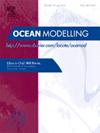On the assessment of channel deepening impacts in micro-meso tidal estuaries: A systematic analysis
IF 2.9
3区 地球科学
Q2 METEOROLOGY & ATMOSPHERIC SCIENCES
引用次数: 0
Abstract
The need for efficient maritime transportation in estuaries has led to the development of diverse dredging strategies to accommodate vessels with deep drafts. Most recent studies assessing the environmental impacts of channel deepening use advanced, tailored models to simulate the long-term response to historical bathymetric changes in estuaries worldwide. However, these models are often time-consuming and highly specific to local conditions, limiting the broader applicability of their results. In addition, a common limitation is the significant time gap between the bathymetric data used, often exceeding 100 years. This makes it challenging to quantify the effects of isolated deepening operations, which is essential for understanding the influence of human intervention on estuarine dynamics. To overcome this limitation while ensuring efficient and adaptable modelling, this paper presents a three-dimensional idealised model (Delft3D) to quantify the short-term, e.g., weeks, hydrodynamic and salinity response to dredging operations in micro-meso tidal, well-mixed estuaries. Implications on channel operativity are also discussed. The numerical experiments examine variations in both channel depth and dredging length. Key findings suggest that dredging length is critical in the estuarine response. Specifically, dredging length has a greater influence on tidal amplification than channel depth. Changes in the flow structure are primarily driven by changes in the barotropic pressure gradient and bed shear forces, which vary spatially along the estuary, defining three distinct regions of behaviour. In addition, salt intrusion increases linearly with channel depth and becomes particularly sensitive to dredging length in shorter operations. Regarding basin management, results reveal that landward operativity is compromised by dredging in the lower river.

微中潮河口河道加深影响评价的系统分析
对河口高效海上运输的需求导致了各种疏浚策略的发展,以适应深吃水的船只。最近评估航道加深对环境影响的研究大多使用先进的、量身定制的模型来模拟全球河口对历史水深变化的长期反应。然而,这些模型往往是耗时的,并且高度针对当地条件,限制了其结果的广泛适用性。此外,一个常见的限制是所使用的测深数据之间的时间差距很大,通常超过100年。这使得量化孤立加深作业的影响变得具有挑战性,这对于理解人为干预对河口动力学的影响至关重要。为了克服这一限制,同时确保建模的有效性和适应性,本文提出了一个三维理想模型(Delft3D),以量化在微中潮、混合良好的河口疏浚作业的短期(例如,周)水动力和盐度响应。对通道操作性的影响也进行了讨论。数值实验考察了航道深度和疏浚长度的变化。主要研究结果表明,疏浚长度对河口反应至关重要。具体而言,疏浚长度对潮汐放大的影响大于航道深度。流动结构的变化主要是由正压梯度和河床剪切力的变化驱动的,它们在空间上沿河口变化,定义了三个不同的行为区域。此外,盐侵量随通道深度线性增加,在较短的作业中对疏浚长度尤为敏感。在流域管理方面,研究结果表明,下游河道的疏浚损害了向陆地的作业能力。
本文章由计算机程序翻译,如有差异,请以英文原文为准。
求助全文
约1分钟内获得全文
求助全文
来源期刊

Ocean Modelling
地学-海洋学
CiteScore
5.50
自引率
9.40%
发文量
86
审稿时长
19.6 weeks
期刊介绍:
The main objective of Ocean Modelling is to provide rapid communication between those interested in ocean modelling, whether through direct observation, or through analytical, numerical or laboratory models, and including interactions between physical and biogeochemical or biological phenomena. Because of the intimate links between ocean and atmosphere, involvement of scientists interested in influences of either medium on the other is welcome. The journal has a wide scope and includes ocean-atmosphere interaction in various forms as well as pure ocean results. In addition to primary peer-reviewed papers, the journal provides review papers, preliminary communications, and discussions.
 求助内容:
求助内容: 应助结果提醒方式:
应助结果提醒方式:


